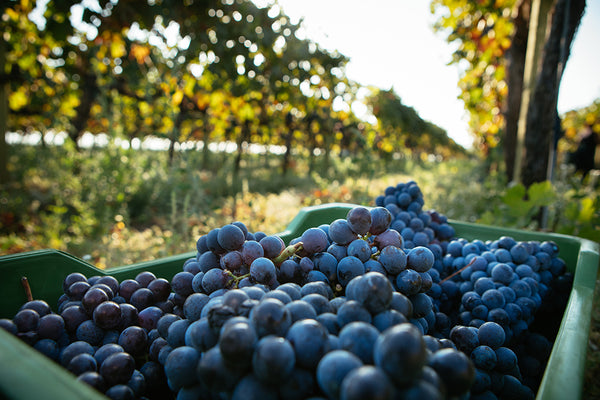Nerello Cappuccio
The Nerello Cappuccio vine is one of the two varieties of Nerello, both widespread in Sicily and Calabria.
Otherwise known as Negrello or Niureddu, it is Nerello Mascalese's lesser-known cousin, famous for its application in the significant red wine blends like the Etna DOC.

The term Nerello certainly derives from the intense coloring of the grapes, while "cappuccio" derives from the characteristic bearing of the plant grown as a sapling.
It is a light-bodied red wine that primarily grows on the slopes of Mount Etna in Sicily. Despite its rarity, the wine offers amazing value and a taste profile that’s often likened to fine Pinot noir.
While rarely used as a varietal wine, it often compliments the aforementioned closely related grape variety, which is much more fruitful and deemed by many to be of higher quality.
That said, some varietal versions exist, from which tasters should expect a soft yet richly colored wine that coats the mouth with cherry notes.
Nerello Cappuccio Growing Regions
It is mainly grown in the coastal, hilly and foothill areas of the provinces of Catania and Messina. In Sicily, Nerello Cappuccio is found above all in the Etna area, in fact it grows on the slopes of the Etna volcano between 350 and 900 meters above sea level, which boast the perfect combination of climate and soil for smooth, elegantly structured wines.
Nerello Cappuccio Origins
The specific origins of the red wine grape are widely disputed. However, the most commonly accepted claim is that it began sprouting in Catania, eventually spreading to Messina and passed the Strait to reach the Calabria coastlines.
Like its origin story, the grape's history is full of twists and turns. In fact, it nearly suffered complete extinction, but dedicated winemakers decided to regrow the fruit in the high slopes of eastern Mount Etna, reinvigorating its life.
Most Popular Nerello Cappuccio Red Wines
Nerello Cappuccio contributes for about 20% to the blend of the famous Etna red DOC wine, blended with Nerello Mascalese and both harvested very late, around mid-October.
Nerello Cappuccio brings its luxurious aroma and deep color to the region's blended wines, working perfectly to soften the more detailed notes of Nerello Mascalese wine varieties.
Due to the lack of tannin profile found in the grape, Nerello Cappuccio has a long-standing reputation as a complementary addition to wines.
Such wines contain unmissable perfumes, likened by some connoisseurs to the aromatic wines of Barolo and Burgundy.
Those lucky enough to sample wines containing this grape variety benefit from subtle notes alongside woody essences and vanilla sprinkles. Floral notes, especially those found in cherries, should also be expected, making for a wholly satisfying yet subtle experience on the palate.
Nerello Cappuccio Food Pairings
The red wines produced from Nerello Cappuccio alone work delightfully with food pairings such as:
- Margherita pizza and pasta dishes
- Swordfish and tuna loin
- Steak, pork and meatballs
- Semi seasoned chesees
- Butternut squash, roasted wild mushrooms, aubergines
Nerello Cappuccio FAQ
What is the difference between Nerello Mascalese and Nerello Cappuccio?
These ancient and indigenous Sicilian red grapes grow on the slopes of Etna volcano and blended together, make the excellent Etna Rosso DOC. Nerello Mascalese has a ticker skin and contributes to create a more tannic wine, Nerello Cappuccio gives fragrant perfume and supreme elegance to the wine.
What does Nerello wine taste like?
Nerello Mascalese and Nerello Cappuccio are rare and indigenous Sicilian red grapes, growing on the volcanic soils of Etna volcano. They can be similar to Pinot Noir for their light to medium body and similar taste profile.
What cheese goes with Nerello Cappuccio?
Medium seasoned cheeses like Pecorino, Caciocavallo, Provolone, as well as fresh Ricotta and Gruyere. The great balance between tannins and fruitness opens many possibilities for food pairing, including fish.

